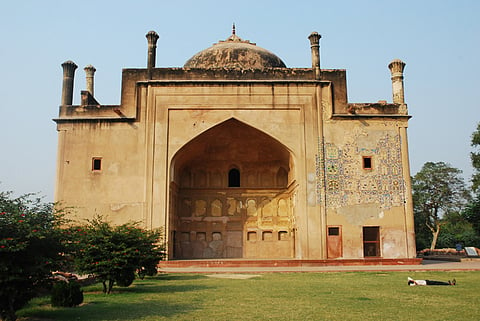
- Destinations
- Experiences
- Stay
- What's new
- Celebrating People
- Responsible Tourism
- CampaignsCampaigns
- Subscribe
- Buy Now

Nestled in the historic city of Agra, within a stone's throw of the iconic Taj Mahal, lies a lesser-known gem known as Chini Ka Rauza. The name itself piques curiosity, attributing its origin to the glazed-tile ornamentation that is believed to have been sourced all the way from the land of China, but without any concrete evidence. Yet, what truly sets this monument apart is not just its intriguing name but the remarkable artwork and vibrant colour embellishments that adorn its structure.
Chini Ka Rauza, built in 1635 during the reign of Shah Jahan, holds historical significance as a funerary monument dedicated to Allama Afzal Khan, a distinguished poet and scholar who also served as the Prime Minister during Shah Jahan's era. It's worth noting that this monument boasts the distinction of being among the first structures in India to feature glazed tile work, hence its name, as porcelain is colloquially referred to as "Chini Mitti" or Chinese clay in various parts of India. The intriguing aspect here is that Allama Afzal Khan, the very individual it commemorates, initiated the construction of his own tomb during his lifetime, a testament to his foresight and legacy.
Afzal Khan hailed from Shiraz in Safavid Persia, where his father served as a modest revenue collector in the Fars region. Within his extended family, Afzal Khan's lineage had connections to various financial roles in Iran, with two uncles involved in Iranian financial matters and two others engaged in trade links between Iran and India. Notably, Afzal Khan had a sibling named Amanat Khan, who would eventually join him in India and gain fame for his exceptional calligraphic contributions, including the inscriptions adorning the magnificent Taj Mahal.
The architectural splendour of Chini Ka Rauza is a sight to behold. The tomb is crafted predominantly from fine china tiles and mud, seamlessly blending Afghan and Persian architectural styles. The rectangular structure once boasted two grand gates, one facing north and the other south, alongside a three-storied octagonal tower near the ghat, although much of this has succumbed to the ravages of time, leaving the main tomb standing as a sole survivor. As you explore the interior and exterior, intricate Islamic inscriptions adorn the walls, while colourful tiles and brown stones punctuate the structure.
Chini Ka Rauza's most captivating feature lies in the vivid embellishments that grace its architecture. Colourful tiles, bedeck brackets, chajjas, and balconies, while arches showcase intricate designs adorned with a palette of orange and blue tiles. The entire tomb is a testament to the exquisite craftsmanship of its time, a masterpiece that fuses fine tilework with Persian architectural finesse. While Chini Ka Rauza may have been one of Agra's overlooked treasures, there is renewed hope for its preservation and recognition. The Archaeological Survey of India has embarked on restoration projects aimed at reviving the historical significance of this monument.
The best time to explore the wonders of Chini Ka Rauza is during the winter months when the climate is pleasant, making it an ideal day trip. Winters, starting from November and lasting till March, offer a comfortable setting for your visit. Summers, however, can be sweltering, so if you can brave the heat, you might consider it. The monument remains open from morning to evening throughout the week, with potential closures during local and national holidays. As for entry fees, there is none, making it an accessible historical treasure for all to discover.
Address: Katra Wazir Khan, Agra, Uttar Pradesh
